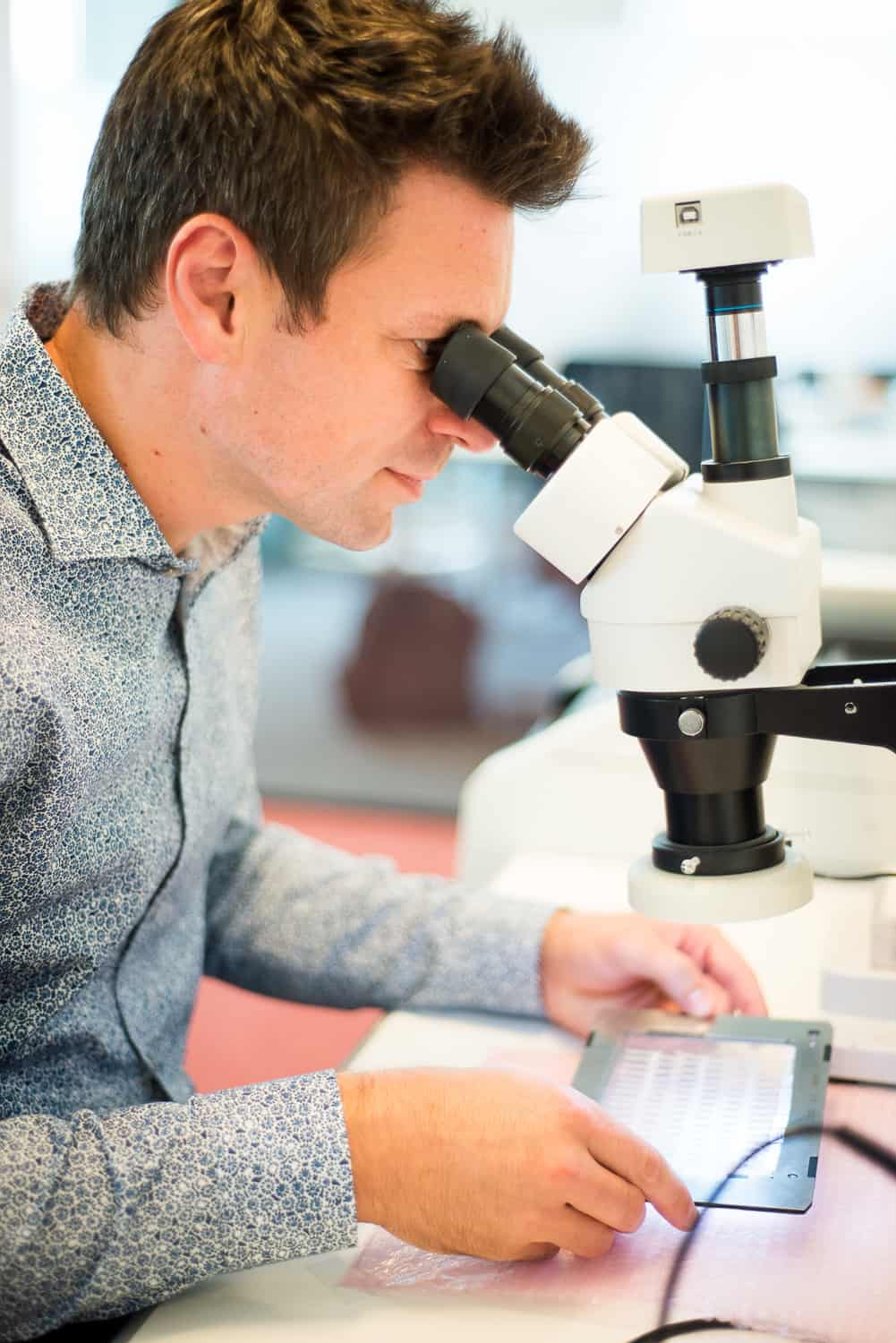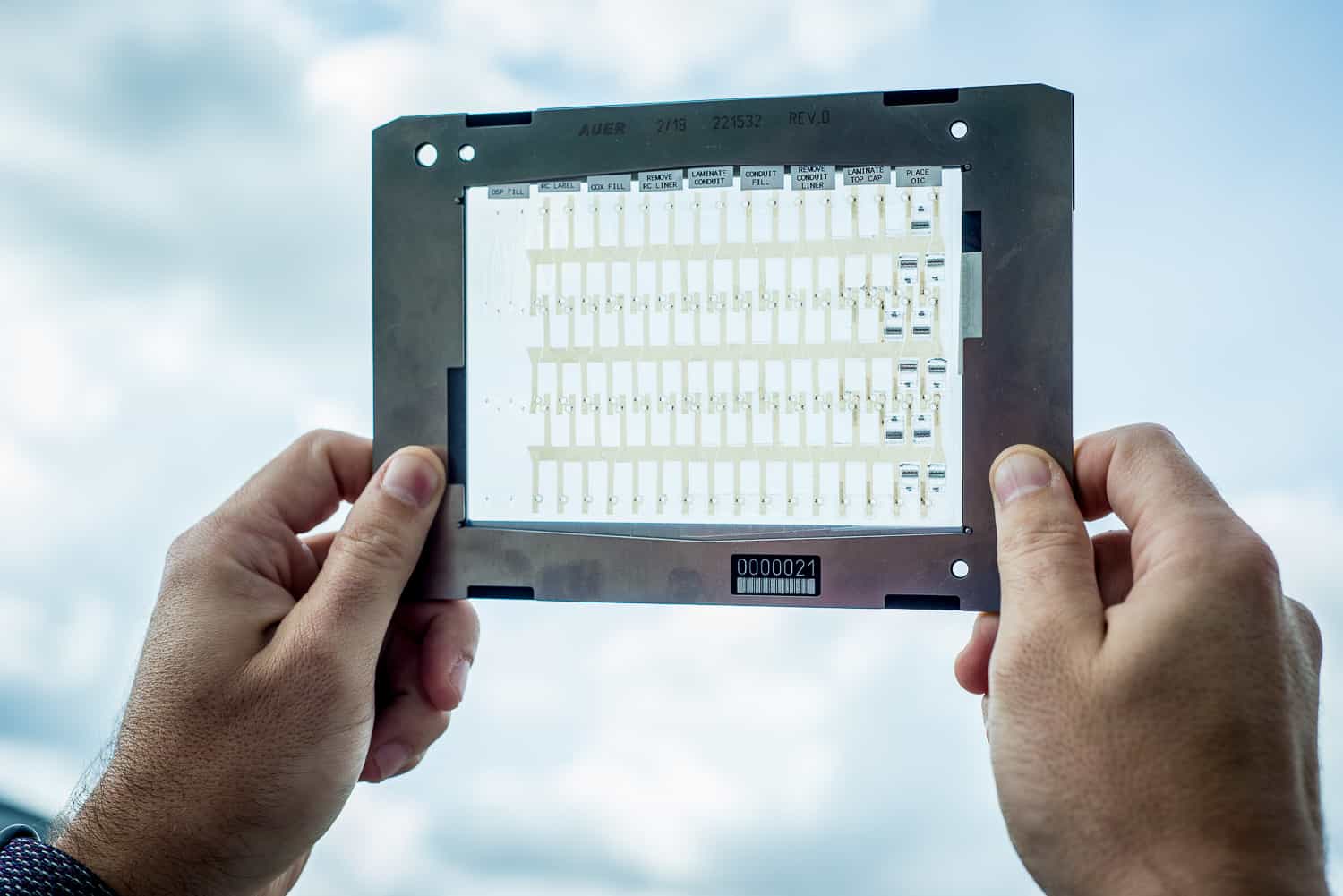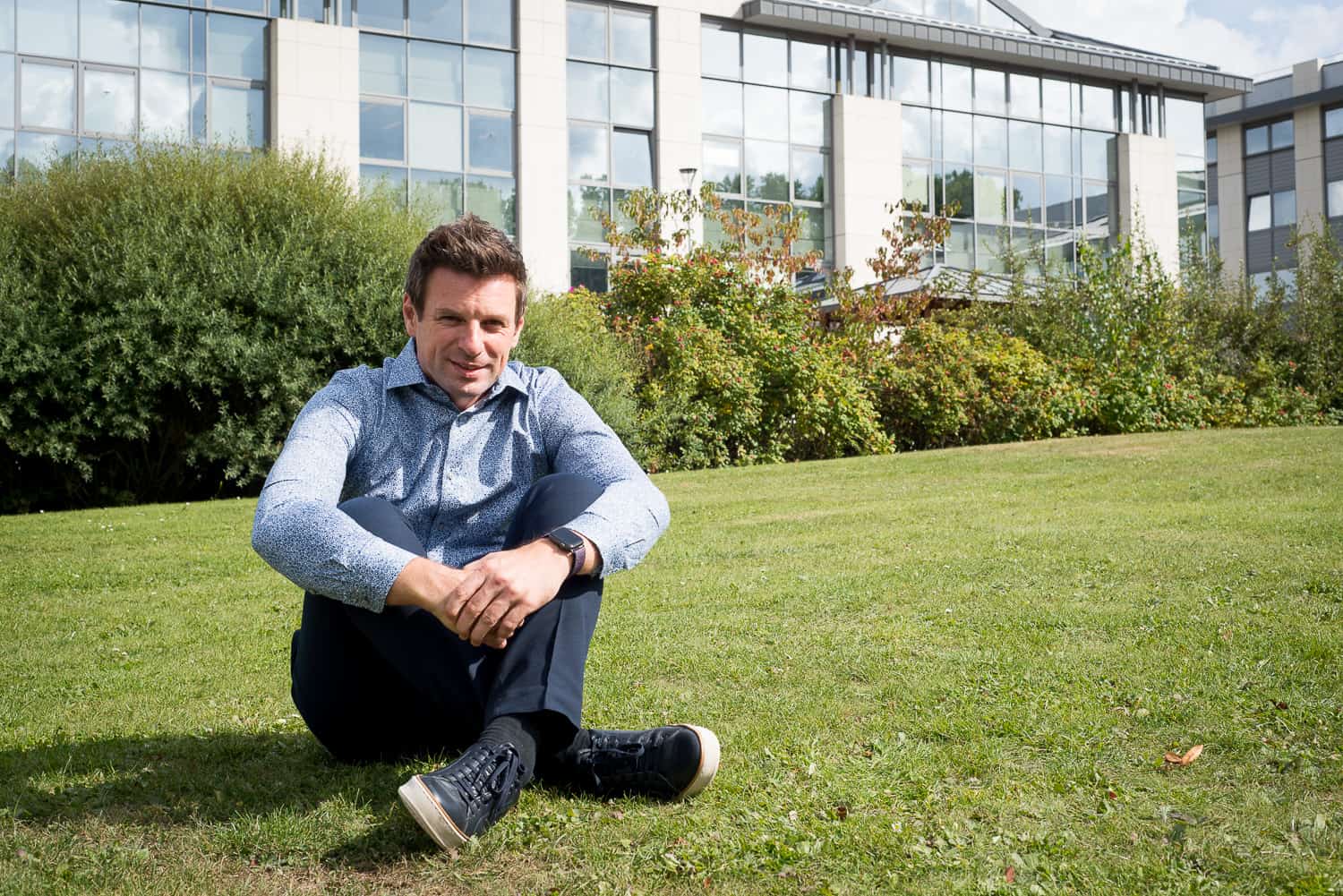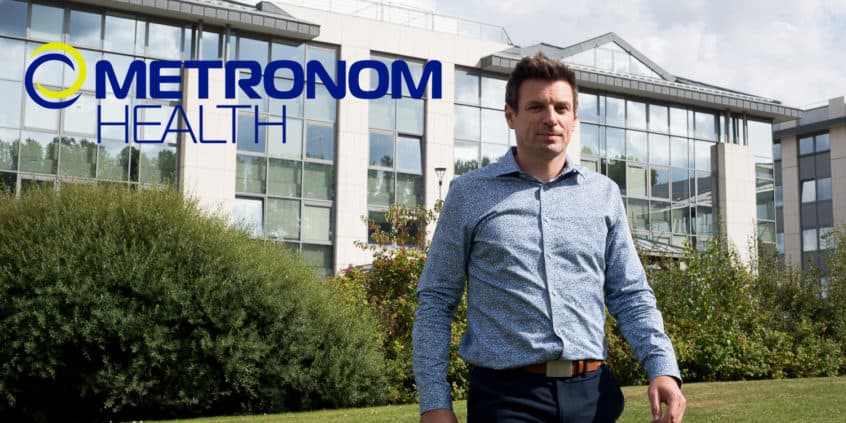Pricking their finger to draw a drop of blood used to be the only method for people with type 1 diabetes to check their glucose levels. Yve de Buysscher, head of Metronom Health’s software team, explains the dangers inherent to this system: “Pricking your finger as a diabetes-patient is a bit like driving a car while blindfolded and peeking at the road only once in a while. On the left side of the car there’s gravel, on the other side is a ravine.” Hyperglycemia is the term used when your blood sugar levels are too high and can be compared to the gravel; the effects of the occasional swerve are unpleasant, not life-threatening. The potential danger of the other side is obvious and can be compared to hypoglycemia, a lack of sugar in the blood. Metronom Health is working on a new system of continuous glucose monitoring (CGM) that would take the blindfold off of the driver for good.
Taking glucose monitoring to a different league
Metronom Health is following a trend in glucose monitoring occurring worldwide: that of continuously monitoring sugar levels instead of sporadic peeks with finger pricks. There are many advantages these new systems will have for people with type 1 diabetes. Yve points back to his blindfolded driving metaphor, and why it is important to keep an eye on the road continuously: “By continuously monitoring the glucose levels in the blood of a user we can start to make predictions. What will these levels look like in half an hour? Are the glucose levels rising or falling? How fast are they falling? If a person with type 1 diabetes’ glucose levels are expected to keep falling, we know that within one hour the person may get very sick. In this case, we can warn the person in time to eat something, even during the night.”
During the day, this predictive model can also solve some problems people with diabetes often encounter. “When we’re awake, there are about 40 different factors that have an influence on our glucose levels. Stress, for example, or physical activity can have strong effects. This makes it a bit trickier to make predictions and it is why we try to integrate our sensor with products like smart watches. We hope to work together with companies that produce smart insulin pens that would offer us more data to work with. This way we would know how much insulin has been injected, and prevent someone from double dosing themselves which could lead to a coma or even death.”

The advantages of CGM are obvious, and many companies are working on such systems. However, Metronom Health is taking a different approach. “Our sensors take measurements optically, instead of electrochemically,” Yve explains. “We use a type of patch that occasionally fires some light to a sensor beneath the skin. By measuring the duration of the afterglow of this light, we know how much glucose there is. So in essence, we measure time like a metronome. By using these so called opto-enzymatic measurements, we are able to measure low and dangerous glucose levels much more reliably than electrochemical systems can.”
Growing to make predictions
Metronom Health started small. In 2008 founder Troy Bremer noticed firsthand the shortcomings that glucose monitoring technology had, since his wife has type 1 diabetes. He set out to find a better solution and started the research that would lead to this new kind of sensor. From there, the team very slowly grew and worked towards a prototype. Two years ago, the company saw a more serious growth, as they grew closer to the product stage.
Now, Metronom Health consists of nearly 100 people working in their main base of operations in Laguna Hills, California. Belgium, a country where good engineers are easy to find, became CEO Michel Lussier’s favored location to set up Metronom Health’s software department.
Yve explains his role in the company: “When I first started working as the Director of Software for Metronom Health here in Belgium two years ago, I was the company’s entire software team. Now, my team consists of about ten people locally, and two more in Copenhagen.”
“My team of highly specialized engineers develops the software used inside the sensor, as well as the linked applications for iPhone and Apple Watch. In the future, we’ll also add an application for Android devices. These applications make predictions regarding the user’s glucose levels. They also provide the system that shows alerts to the user and the platform where the integration happens with other products such as smart insulin pens.”

Managed services as part of the solution
Yve’s team is smaller than similar crews usually are, this has some influence on their choice of tools. “We use a couple of Atlassian’s products: Confluence, Jira, and BitBucket. A lot of us had already worked with these products in the past, so we were very familiar with them. Furthermore, they’re tools that are very affordable for smaller teams.”
When Yve first started at Metronom Health the team would use the cloud-based version of Atlassian’s tools. This was due to the very small scale of the team, and the fact that they did not have a dedicated IT department. However, this cloud-based approach soon changed. “Since we are developing a medical apparatus, we need to comply with certain regulations. This means that all the tools we use to develop our product also need to adhere to these regulations.”
“It is vitally important that we are in control of when our tools are being updated. It should never occur that we can not solve a critical issue with the sensor because of an unscheduled update. That is why we needed to implement certain procedures to maintain our toolset: when to update, what to test? This is why we decided on a server-based solution, and why we chose for the Managed Services model. Switching to the server editions gave us full control over the updates, backup strategy and validation of the system.”
Time to iDalko
“Another reason for outsourcing the maintenance of our tools is our lack of a dedicated IT department. The time to market is crucial for products like these. The faster we’ll put our product out, the larger our market share will be. This is why we don’t have time to spend on updates, on checking which version of a certain piece of software is the most stable, and how to integrate all those tools.” Yve chose to let iDalko take care of these tasks, so that his engineers can focus solely on getting the sensor market-ready. “Whenever one of our tools needs to be updated, iDalko will first perform a long set of tests in a dedicated testing environment. Only when the installation is fully stable will it be implemented in our production environment.” And in the meantime, Yve and his team can continue the work.

Strict guidelines regarding the development of a medical solution apply to many facets of the team’s toolset and work process. “According to European law, we need to have a demonstrable, validated backup strategy.” This backup strategy was one Yve could also outsource through Managed Services, minimizing another source of complicated paperwork.
“Metronom Health may not be the most typical kind of Jira user. We heavily rely on automated testing and those test results are automatically added into Jira. This led to a couple of unique use-cases that provided some challenges: What was the optimal workflow, and which add-ons should we use to achieve it? iDalko worked together with the developers of certain add-ons to see what was possible, and how certain products needed to be configured to do what we wanted.”
“Our current set-up works without any serious issues. The hardest part when moving from the cloud to a server-installation was the migration of older data. We had been using some add-ons that were no longer available to us, or that worked differently on a server installation. After some studies, we finally managed to migrate our entire set-up and data. The process took no more than two weeks and now we can see a marked boost in performance on the server set-up of our tools.”
Yve is always on the lookout for further possible improvements to the workflow at Metronom Health. “In the near future, I plan on sitting down with iDalko and Xpand-it to see what else is possible with their products.” Xpand-it is a company that developed the add-on Xray for Jira. Xray can be used to manage automated testing and streamline QA. “We are still evaluating some new add-ons for Confluence and Jira. For example, we’d like to do risk-analysis through Jira.”
Removing unnecessary timesinks is vital for Yve and his team since they’re working on a product that needs to be market-ready as soon as possible. By outsourcing distracting things like software updates, the maintenance of add-ons, and paperwork to iDalko’s Managed Services, Metronom Health can focus on their goal: finally removing the blindfold, and putting people with type 1 diabetes back in the driver’s seat.


